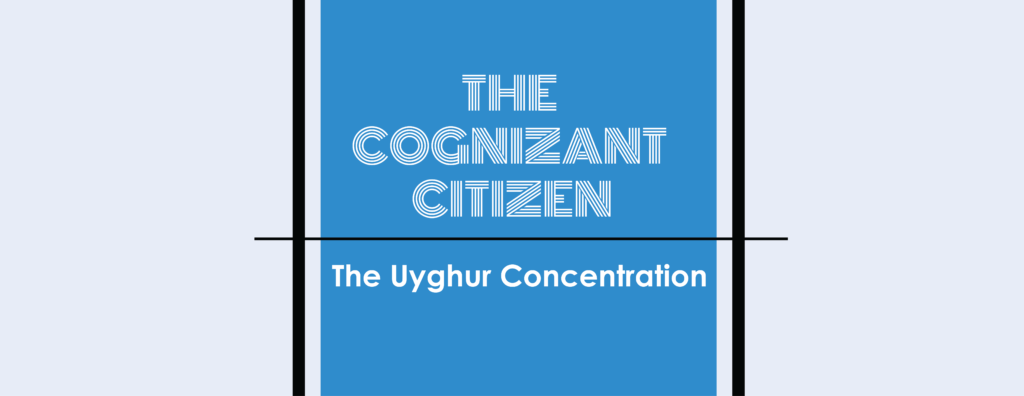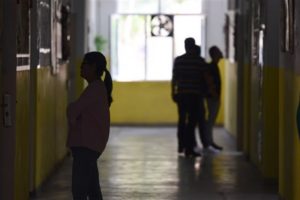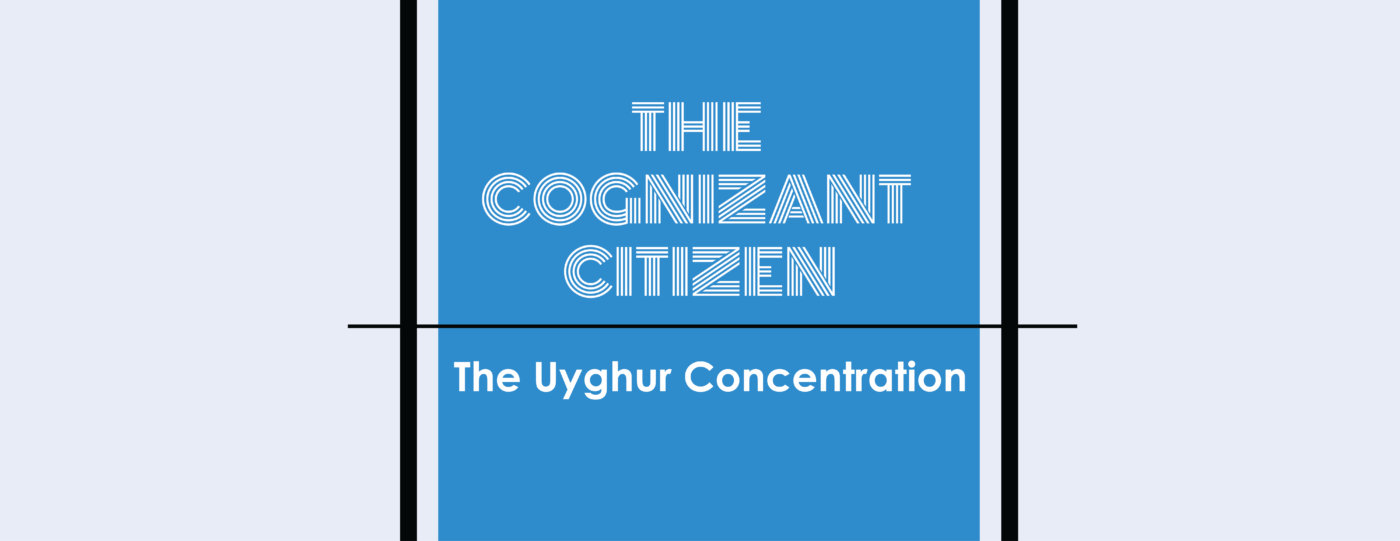
On 7th December, an Uyghur woman named Asiye Abdulaheb gave a horrific account to the New York Times on life inside China’s concentration camps. She described that these camps, in which over a million Uyghurs were imprisoned and indoctrinated, were an attempt to detach them from their language, religion and culture.
In a telephone interview with a reporter from the Times, she stated that she was involved in the release of twenty-four pages of documents regarding the treatment of Uyghur Muslims in China’s camps. Asiye Abdulaheb, 46, said that she was speaking out now to protect herself and her family from retaliation.
Since last year, widespread reports about China’s Xinjiang region had been making headlines. These reports alleged that mass incarceration of Muslims was underway in this region.
Reports of large numbers of Uyghurs and other Turkic minorities disappearing into “re-education camps” had been circulating for a year or so prior, but difficulties in substantiating those allegations on the ground had kept the story well below the radar.
Xinjiang, an autonomous territory in the north-west of China, is a region vastly consisting of deserts and mountains. It is also currently China’s largest natural-gas producing region. It is home to a variety of ethnic groups such as the Uyghurs, the Kazakhs, the Hans, the Huis, the Xibe, Tibetans and the Mongols. Of these, the Uyghurs and the Hans are the majority, making up 45% and 40% of the population respectively. The Uyghurs are indigenous to the region. However, the predominantly Sunni Muslim group is given the status of Ethnic Minority by the (mostly Han) Chinese government; thereby leading them to not be recognised as indigenous to any particular reason.
What happened exactly?
It all started with the migration of the Han Chinese from Beijing, a place largely dominated and mostly controlled by them, to the western part of China, mainly Xinjiang. This caused the emergence of several independent states between 1864 and 1949, in turn causing major unrest among the locals there (Uyghurs), who did not want to be ruled by the immigrant Han. Further tensions and developments caused a large influx of Han Chinese into the Xinjiang region in the late 90s.
The tensions between the Hans and the Uyghurs kept rising until July 2009, when riots broke out in the capital city of Ürümqi. The official civilian death count released by the Chinese government was 156. Out of these, 134 were said to be Han, 11 Hui, 10 Uyghur and 1 Manchu. The World Uyghur Congress claimed that the death count was around 600. Reportedly, 627 vehicles and 633 constructions were damaged.
This sparked a sudden upsurge in violence in Xinjiang. Terrorist attacks became more and more common. Attacks in railway stations, riots, clashes between police and commoners, shootouts and bombings plagued the region.
The Chinese government then started imposing heavy restrictions on Muslims, under the guise of ‘controlling extremist thoughts and religious fervour’. Names like Muhammed and Medina were banned, keeping long beards were banned, fasting during Ramadan was curbed, and mosques were destroyed.
In 2014, the Xinjiang Uyghur Autonomous Regional government started operating Xinjiang re-education camps, officially called Vocational Education and Training Centers, for ‘interning’ Uyghur Muslims. In August 2018, the UN received claims that up to one million Uyghur Muslims and other Muslim groups were being detained in these centres where they were said to be undergoing “re-education” programmes.
The claims were made by rights groups, but the Chinese government has consistently denied these claims. However, there’s growing evidence of oppressive surveillance against people living in Xinjiang.
What has been happening inside these camps?
Before we know what has been going on in these camps, the first question that arises is how these camps were made in the first place. Many prominent sources claim that Xi Jinping, Chinese president, had been looking for some sort of answer to problems of separatism and religious extremism in Xinjiang.
In 2017, the growth of these indoctrinations really took off. This was followed by heavy policing and surveillance in the area. Over 90000 police officers were recruited and around 7300 check posts were set up in the Xinjiang region. Under the guise of “de-extensification”, this was used to detain the local Uyghurs in the newly built concentration camps. The inclusion of a large number of armed forces had been increasingly growing in this area ever since. The environment that was being built around these camps seemed to be nothing like a calm and friendly re-education centre but felt rather like a prison.
In urban areas, most of the camps were converted from existing vocational schools, communist party schools, ordinary schools or other official buildings, while in suburban or rural areas the majority of camps were specially built for the purposes of re-education. These camps are guarded by armed forces or special police and equipped with prison-like gates, surrounding walls, security fences, surveillance systems, watchtowers, guardrooms and facilities for armed police etc. Most of the camps have features resembling jails, rather than anything close to a school. Inmates are cut off from their families for at least a year and held behind multiple layers of security to undergo an ‘ideological transformation’.
Since most of the detainees were Muslims, they are subjected to study communist propaganda for many hours each day. The people there are not only subjected to physical torture but are also harassed mentally. Muslims are forced to carry out activities which are prohibited in Islam. These include and aren’t restricted to forcing them to eat pork and consume alcohol, injections in order to make them infertile, skinning them alive, and forcing them to forsake their religion.
All of these form just a glimpse of what has been going on in Xinjiang. Escaped detainees have reported widespread sexual torture, including forced abortions, forced use of contraceptive devices, sterilization, and rape. Slogans on the walls of the buildings promoting the study of Mandarin Chinese have been seen in the camps.

According to the officials, there are three types of ‘students’ at these ‘re-education’ centres. Firstly, those who have committed a minor offence like wearing a burqa or watching an illegal religious video. Secondly, those who have committed more serious offences and were given the choice to attend instead of going to jail; and others who are sent for rehabilitation after a prison term. These camps follow a ‘graduation’ system but suffice it to say that it is not a fair system to get released from these camps. To leave the canters, the detainees must pass exams, officials said. Despite repeated requests, officials would not provide the exact criteria they use to determine a person’s release. Instead, they said that ‘graduation’ tests combine assessments of language skills, understanding of Chinese law and regulations, ‘de-radicalization’ and vocational skills.
What makes China uncomfortable regarding the entry of US personnel in this region?
Experts from the United Nations and many Muslim religious activists from around the world believe that around a million Uyghurs and many members of Muslim minority groups have been detained in camps in remote Xinjiang region. To give it a more specific term, activists globally believe that these people are being detained in something which would very much resemble a concentration camp, highly similar to the ones which were in operation in Germany during World War II.
China, a country regarded as a massive superpower by many, has been continuously denying the allegations put up against their government. According to the officials at Beijing, these camps are benign and are set up to provide ‘vocational training’ to help eliminate religious extremism.
China goes on to claim that these camps aim at helping the people of this region, mostly minorities, to develop new skills. This makes China want complete control of whatever is happening there, as Xinjiang is a completely autonomous region and interference of any foreign bodies in this regard feels like an interference in the domestic affairs of the country.
What are other countries and international bodies doing about it?
United States
On 3 December 2019, the United States House of Representatives has approved a bill requiring the Trump administration to toughen its response to China’s crackdown on Uyghur Muslims in the western region of Xinjiang. This could prove to be another setback to the ongoing trade negotiations between the two countries.
The Uyghur bill, which was passed 407-1 in the Democratic-controlled House, requires the U.S. president to condemn abuses against Muslims and call for the closure of mass detention camps in Xinjiang. This step would be required to ensure the non-violation of human rights, not only in China but in any other part of the world. China is very much against it, because the bill is very much a hurdle for its trade with the US, and will have a significant effect on its economy. Some countries have come in support of it.
Turkey
In February 2019, the spokesperson for the Turkish Foreign Ministry denounced China for “violating the fundamental human rights of Uyghur Turks and other Muslim communities in the Xinjiang Uyghur Autonomous Region.” But then in July 2019, when Turkish President Erdoğan visited China, he said, “It is a fact that the people of all ethnicities in Xinjiang are leading a happy life amid China’s development and prosperity.” Erdogan also said that some people were seeking to “abuse” the Xinjiang crisis to jeopardize Turkey and China’s economic relationship.
Some countries such as Kazakhstan and Saudi Arabia have also come out in support of these policies being adopted by China. Saudi Arabia’s Crown Prince Mohammad bin Salman defended these camps, saying “China has the right to carry out anti-terrorism and de-extremization work for its national security.” A statement as bold as this might be perceived as a threat in itself, let alone carrying out such activities.
United Nations
On 21 May 2018, during the resumed session of the Committee on Non-Governmental Organizations in the UN, Kelley Currie, the U.S. representative to the U.N. for economic and social affairs, raised the issue of the mass detention of Uyghurs in re-education camps. She stated that “Reports of mass incarcerations in the Xinjiang were documented by looking at Chinese procurement requests on Chinese websites requesting Chinese companies to tender offers to build political re-education camps”.
On 10 September 2018, U.N. human rights chief Michelle Bachelet called on China to ease restrictions on her and her office’s team, urging China to allow observers into Xinjiang and expressing concern about the situation there. She said, “The UN rights group had shown that Uyghurs and other Muslims are being detained in camps across Xinjiang and I expect discussions with Chinese officials to begin soon”.
Human Rights Organisation
On 9 September 2018, Human Rights Watch released a 117-page report, “‘ Eradicating Ideological Viruses: China’s Campaign of Repression Against Xinjiang’s Muslims”, which accuses China of the systematic mass detention of tens of thousands of ethnic Uyghurs and other Muslims in political re-education camps, without being charged or tried. presented new evidence of the Chinese government’s mass arbitrary detention, torture, and mistreatment, and the increasingly pervasive controls on daily life. The report also urged foreign governments to pursue a range of multilateral and unilateral actions against China for its actions, including “targeted sanctions” against those responsible.
What is the reaction of the Chinese Government towards the accusations put up?
The Chinese government had denied the existence of re-education camps in Xinjiang until October 2018, when it officially legalized them. When international media agencies asked about the re-education camps, China’s Ministry of Foreign Affairs said that it “had not heard” of this situation.
On 18 March 2019, the Chinese government released a white paper about the counter-terrorism and de-radicalization in Xinjiang. The white paper claims “A country under the rule of law, China respects and protects human rights in accordance with the principles of its Constitution.” The white paper also claims Xinjiang hasn’t encountered violent terrorist cases for more than two consecutive years, extremist penetration has been effectively curbed, and social security has improved significantly.
In July 2019, the Chinese government released another white paper that claimed: “The Uyghur people adopted Islam, not of their own volition, but had it forced upon them by religious wars and the ruling class.”
Recent Developments
On 3 December, the US House of Representatives passed a bill demanding a tougher response from the Trump administration regarding the mass detention centres run by the Chinese government in Xinjiang.
The Chinese government reacted with fury to the proposed legislation, with Foreign Ministry spokesman Hua Chunying calling it “wantonly smearing China’s counter-terrorism and de-radicalization efforts.” As of then, no further action has been taken.
As it becomes increasingly clear that there do exist camps for Muslims in China, the motivation for the same is open for debate and criticism.
Written by Rushil Dalal, Shreyes Srivastava and Tanya Jain
Images courtesy: BBC, Keir Simmons/NBC news


Leave a Reply
You must be logged in to post a comment.